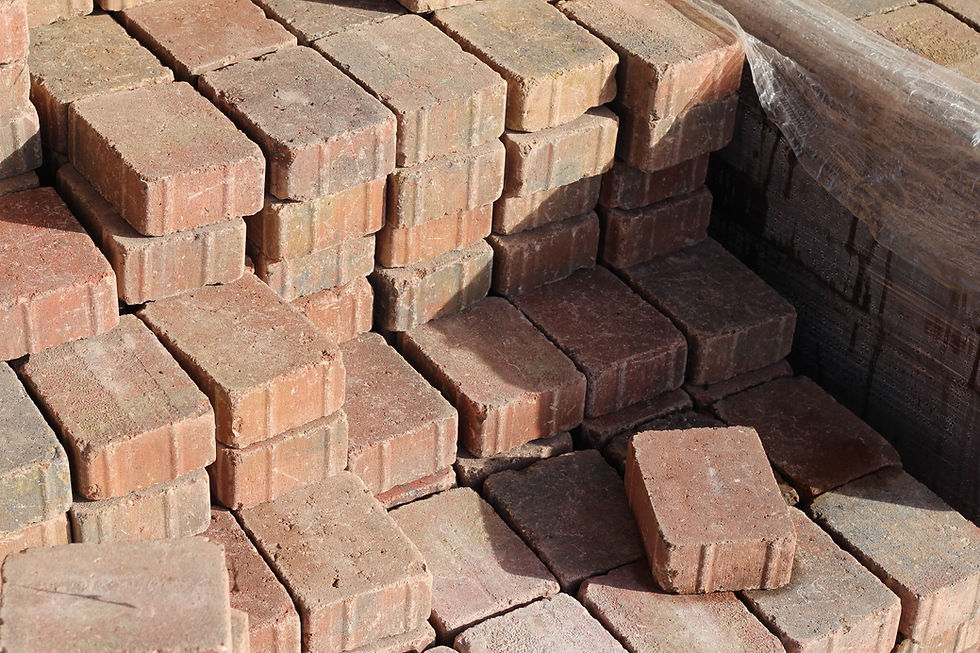How to Build a Garden Wall
Building a free-standing garden wall is not only a satisfying achievement, but it’s also something that can improve your garden. Although it seems like a daunting task, it can be an easy job if you follow some simple instructions. This blog will give you everything you need so that you know how to build a garden wall successfully.
What materials do I need?
The materials needed for building a wall are determined by the personality of your garden. Some materials, such as natural stone, create a sense of nostalgia, whereas other building materials, such as brick and cement, produce a more modern look.
It is important to select the materials that are suited to your requirements. All these materials can be purchased from your local builders’ merchant. Before we discuss how to build a garden wall, let’s look at some of the materials available:
Concrete
Concrete is suited to various design and style ideas as it is available in various shapes and sizes. Not only does it create a sophisticated and modern aesthetic, but concrete is also very durable and doesn’t require frequent maintenance.
Brick
Brick is the most common wall-building material. It’s durable, low-maintenance and eco-friendly, as clay is a naturally-sourced material. However, brick walls require a strong foundation. Furthermore, brick is available in a limited range of colours and sizes, so there isn’t much flexibility for design.
Natural Stone
Natural stone is a long-lasting material that creates a nostalgic, rural look for your walls. There is a wide range of natural stone products available that are suitable for building walls, including limestone and sandstone. Natural stone also has the added benefit of being resistant to scratches and stains, so is very low maintenance.
How to plan a garden wall
Building a garden wall is pretty straightforward, but you’ll need to plan it properly to make sure it’s strong and stable. This will depend largely on what you’re using it for. Garden walls have many uses, including:
Holding earth back to create a terraced area.
Stopping a sloping bank from collapsing.
Creating a solid barrier next to an area of high traffic, such as a road or footpath, to reduce noise and create privacy.
Dividing a garden into different areas.
Proving a solid base for fencing.
How to build a garden wall
The work involved in building a garden wall can vary extensively, but the process is fairly similar no matter what products you use. Building a garden wall can be achieved by the average DIY person, but it’s important to apply for planning permission before you do so.
Here are some handy tips that will help you learn how to build a garden wall:
Build the foundations
Use pegs to mark out the wall’s location and then dig out a trench where the wall will be. Use a spirit level to ensure the trench is level. After this, fill the trench with a layer of hardcore, followed by a layer of concrete.
Build one layer at a time
Using a trowel, spread the mortar evenly over the foundations, and then over the bricks of each layer. The mortar should slightly exude from between the joints and any surplus should be removed with the trowel. Make sure to build one layer of bricks at a time. A spirit level can be a handy tool to use here.
Maintenance

It’s important to keep an eye on your garden wall, as any brickwork exposed to the elements will suffer from wear and tear. Garden walls are one of the most likely structures to collapse – especially if there’s an overgrown garden behind it. Make sure to cut ivy growth back, as this can damage the structure. Furthermore, inspect the mortar between the bricks frequently. If it’s crumbling, it might need replacing.
We hope you’ve found this guide on how to build a garden wall useful! If you’re currently looking building materials for your garden wall, come and visit A&S Paving in-store, or get in touch today.

























Comments